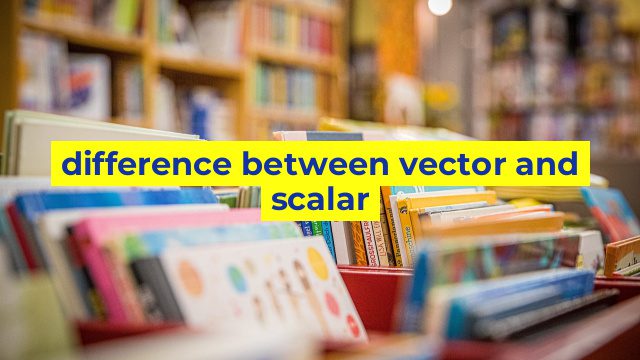The Difference Between Vector and Scalar
Physics deals with the study of motion, matter, and energy, and it is essential to understand the concepts of scalar and vector quantities. In the early stages of physics, scalar quantities were the primary focus since they were easy to understand and calculate. However, as the study of physics advanced, vector quantities emerged, and they became increasingly necessary to describe motion effectively.
Scalar Quantity
A scalar quantity is a measurable physical quantity that has magnitude but no specific direction. Scalar quantities can be one-dimensional, two-dimensional, or three-dimensional but don’t follow any particular direction. Examples of scalar quantities include time, distance, and mass. Scalar quantities are measured in units, such as seconds, meters, and kilograms, and they can be added or subtracted using the usual algebraic rules.
Vector Quantity
A vector quantity is a physical quantity that has both magnitude and direction. Examples of vector quantities include displacement, velocity, and acceleration. A vector can be represented by an arrow, where the length of the arrow represents the magnitude of the vector, and the direction of the arrow represents its direction. Vectors can be one-dimensional, two-dimensional, or three-dimensional, and they follow mathematically precise rules for how they are added, subtracted, and multiplied.
The Key Differences Between Scalar and Vector Quantities
The key differences between scalar and vector quantities can be summarised as follows:
– Scalar quantities have magnitude but no direction, while vector quantities have both magnitude and direction.
– Scalar quantities can be added or subtracted using algebraic rules, while vector quantities follow specific rules for addition and subtraction.
– Scalars can be multiplied by other quantities using simple arithmetic, while vectors can be multiplied using specialised techniques such as dot products and cross products.
– Scalars can be converted from one unit to another using conversion factors, while vectors can only be added or subtracted if they are expressed in the same units.
In conclusion, the concepts of scalar and vector quantities are essential in the study of physics. Scalar quantities are straightforward to understand and calculate, while vector quantities require a deeper understanding of concepts such as magnitude and direction. Understanding the difference between scalar and vector quantities is crucial in solving complex problems that involve motion and forces.
Table difference between vector and scalar
| Feature | Vector | Scalar |
|---|---|---|
| Definition | A quantity with both magnitude and direction. | A quantity with only magnitude. |
| Examples | Velocity, acceleration, force | Temperature, mass, time |
| Representation | Column or row matrix with components. | Single value or array of values. |
| Operations | Addition, subtraction, dot and cross product. | Addition, subtraction, multiplication, division. |
| Directional Properties | Has magnitude and direction, can be positive or negative. | Has only magnitude, always positive. |

